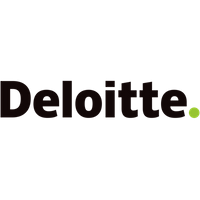How to review employee benefits through a DEI lens
The power of benefits in supporting diversity, equity and inclusion (DEI) in the workplace is often overlooked or considered through an over-simplistic lens of “let’s introduce a DEI benefit”. There is so much more to DEI when it comes to benefits. Here are our top five tips on how to review employee benefits with a DEI lens.
1. Consider the DEI angle in existing benefits
We typically label certain benefits as hitting the mark from a DEI perspective, with some of the more obvious ones being enhanced shared parental leave, flexible working (e.g. working from home) and flexible bank holidays. However, every benefit has a DEI dimension.
For example, private medical insurance (PMI) is not considered an obvious DEI benefit since most policies will be providing healthcare cover that suits the “average” employee. Enhancing your PMI policy to include a wider range of services that addresses the diverse healthcare needs of employees will promote DEI.
Work with your insurers so that your PMI includes cover for under-represented workforce groups with, for example, specific illnesses that may be prevalent within certain ethnic groups or support with gender dysphoria.
2. Make it personal
Benefits can only truly resonate with an employee if they are personal to them, and relevant at a given stage in life, otherwise the widest and richest benefit offer will be undervalued. One way of engaging employees with your benefits programme could be grouping benefits around life events (e.g. saving for a property, parenthood etc.).
Separately, employers then need to actively promote their benefits so that employees recognise which are pertinent to them at any stage of life. We’re starting to see employers use benefit platforms and AI to push specific benefits to employees, having anticipated what will be useful to the employee at any given time. Whether employers are ready to fully embrace AI when delivering benefits is yet to be seen, given the associated challenges around navigating employee privacy and user experience.
In the absence of such technology, employers should use clear examples in employee communications that target specific demographics. This can be supplemented by well-informed managers who can signpost relevant benefits to their teams.
3. Education for all
Benefit plus education and awareness leads to an inclusive, accessible and attractive benefit.
Employees miss out on the full impact of a workplace benefit if it isn't delivered with education and understanding. For several years, there have been many subjects that have been considered taboo to discuss in the workplace, but we know silencing employees on the issues that matter will significantly impact an employee’s wellbeing and productivity.
Employers need to cultivate a work environment that enables employees to raise personal challenges. This can be done by, for example, training managers, having open discussions to reduce stigma and encouraging open communication. Mental health, fertility and menopause are some of the examples where recent progress has been made.
If we take the menopause, thanks in part to some high-profile campaigners, hitherto taboo subjects such as this are being talked about much more openly. However, menopause policies often focus solely on the person experiencing menopausal symptoms. Introducing training for team leaders so they can best support their team members through such life events bolsters the efficacy of any policy. Making team leaders aware of the support that is available to them too also increases impact.
But there is still more to do in these and other areas, such as neurodiversity.
4. Stop looking at take-up rates
It’s important to look at metrics, other than take-up rates, to understand whether a benefit has been well-received.
A benefit that is only utilised by a small number of employees may, in fact, be resonating with a particular demographic of your workforce. To remove such a benefit, therefore, could be extremely damaging, negatively impacting DEI. It may also make you an unattractive employer to potential recruits.
Through leveraging personal data of those making certain benefit selections employers can develop a deeper understanding of trends, patterns, and insights. These can, in turn, guide strategic planning and operational decisions. Employers need to use a data-driven approach to identify opportunities, optimise benefits, and make informed decisions that align with organisational goals in relation to DEI to drive desired outcomes specific to the employer and employee.
5. It’s all about the comms
Effective communication is essential to raise awareness, understanding and appreciation of benefits on offer. We’re all different, and we all want to be communicated with in a way that works for us. This presents a huge challenge for employers.
Again, employers are having to get personal in the way they communicate with their diverse workforce and flex accordingly. Using virtual characters to deliver benefits comms may work for a certain type of employer and employee, equally posters may be the best channel to communicate to other employees. In future, AI has a helpful part to play in ensuring that employee communications around benefits are personal and inclusive. But that topic is for another REBA thought-piece.
Employers who lack a budget to make major revisions to their benefits design should, instead, consider focusing on unleashing a refreshed employee comms strategy that increases employee engagement with the benefits they already offer. In our experience, communicating in the right way to impactfully raise awareness of current benefits will have a seismic impact.
In summary:
- Apply a DEI lens to all benefits
- Turn up the personalisation
- Raise awareness
- Roll out training to line managers
- Use data to drive insights and decision-making
- Effectively employ diverse communications.
These simple points will help employers to really start to turn the dial on having a benefits programme that is truly diverse, equitable and inclusive.
Supplied by REBA Associate Member, Deloitte
At Deloitte, we think and do benefits differently.








